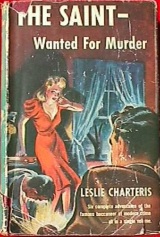Wowza!
My Man Godfrey is one film of which I do not think I will ever get enough. It helps that I am a huge fan of both Carole Lombard and William Powell, but the content of the picture really stands the test of time. I watched this for the third time with family on Easter and it made a nice end to the holiday.
Lombard as Irene Bullock comes across “forgotten man” Godfrey Smith (Powell) in a homeless camp at the city dump during the course of a scavenger hunt that requires she deliver such an unwanted specimen to the home base of the shenanigans. Irene wins Godfrey over after her sister, Cornelia (Gail Patrick), insults him and he pushes her in an ash pile. We immediately learn that although she is part of the upper crust of society, Irene is uncharacteristically hyper and goofy. Whereas others of her class are repulsed by the filthy man, she stands too close and holds his hand. After beating her bratty sister in the scavenger hunt, Irene offers Godfrey a job as the family’s butler, which he gladly accepts.
Butling for the Bullocks is no easy task, Godfrey quickly learns. The mother sees pixies when she is hung over, Cornelia is a royal bitch day and night, and Irene has never learned about “certain proprieties” that instruct not to, for example, sit on the butler’s bed. Godfrey sticks it out, however, even after Irene kisses him following a dramatic spell she feigns to ward off her sister’s suggestion they not keep Godfrey on.
After suffering a number of insults from Godfrey, Cornelia takes measures to expel the servant and tries to frame him for stealing a pearl necklace. Without giving away a secret of the plot, I’ll say that although he does not allow himself to get caught with the hot jewelry, Godfrey does not return it either and instead uses it to save the family’s skin later on.
The Bullock family is composed of lunatics, except for the father/husband (Eugene Pallette). The mother (Alice Brady) is as airheaded as Irene and keeps a piano-playing protegé in the house, Carlo (Mischa Auer), who finds more time to eat than to practice and likes to make a big dramatic show of upset any time money is discussed. Irene is a fast-spoken, melodramatic blonde. When she learns Godfrey is married with five children, she announces her engagement to an unsuspecting party-goer and then proceeds to cry on the stairs. She poses dramatically and talks about no one caring if she dies because Godfrey has rejected her.
The story also has a great secondary appeal for me in its strong message about homelessness. Godfrey talks about how the only difference between a businessman and a derelict is want of a job and how a helping hand can go a long way.
I think My Man Godfrey will be a film that remains funny well into the future. Most Americans might not employ butlers any longer and the concept of marrying within ones social class has mostly gone out the window, but the humor that lies within the story is everlasting. The Bullocks are less a representation of the idle rich than they are of the insane rich. Watching that family is like watching a more beautiful version of the Addams Family. This is one of those must-see movies for every cinema fan.
On a note of background, Powell insisted Lombard be cast in this part, even though it is a bit out of the ordinary for her. She was a great comedienne, but the daffyness she embodies here is new, yet splendid. The two had been married but divorced not long before this project came up. The union was short lived, in large part because their personalities clashed. Powell was reserved, like Godfrey, but Lombard was a foul-mouthed outgoing spirit. Do not fret, however, she found a much more suitable marriage with Clark Gable for the remainder of her truncated life.
Source: Robert Osborne
Filed under: Comedy, Romance | Tagged: Alice Brady, Carole Lombard, Clark Gable, Eugene Pallette, Gail Patrick, Gregory La Cava, Mischa Auer, William Powell, Wowza! | 2 Comments »













